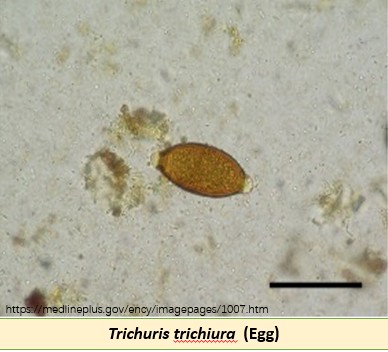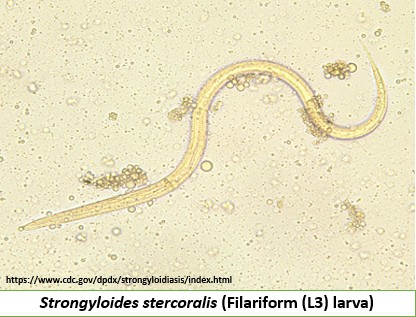Multiplex real-time PCR revealed a very high prevalence of soil-transmitted helminth infections among aborigines in Peninsular Malaysia
by Nurulhasanah Othman1, Noorizan Miswan1, Weng-kin Wong2, Boon-huat Lim2, Rahmah Noordin1
Soil-transmitted helminths (STH) affect one-third of the world's population. The disease primarily affects communities of low socioeconomic status and is difficult to eradicate due to the complexities of breaking the epidemiological trait. The parasite multiplies within the host and excretes eggs into the environment. In endemic areas, a deficient sanitary system exposes susceptible hosts to infectious agents. The prevalence of STH can be reduced by providing healthcare services, hygiene education, a proper sanitary system, and a clean water supply. Nonetheless, close monitoring of disease prevalence is still necessary, because the parasites can survive in the environment for extended periods under ideal conditions and contribute to recurrent STH infections in susceptible hosts. In Malaysia, parasitic infection remains a major public health concern among aborigine (Orang Asli) populations. It was discovered to be extremely common, primarily among aboriginal schoolchildren, resulting in malnutrition as well as poor school performance and attendance. Meanwhile, STH infection is associated with morbidity, and immunocompromised people with strongyloidiasis may become critically ill. According to a recent study of the prevalence and severity of STH among aboriginal children, 100% of the sampled population was infected with at least one or more STH. Trichuris trichiura was found to be the most common ova (eggs) in all studies on Malaysian aborigines, while hookworm ova were the least common. The traditional microscopic faecal examination which has low diagnostic sensitivity was used in these studies. In this current study, a multiplex real-time PCR assay was used to detect the infections to obtain a more accurate STH prevalence profile of Malaysian aborigines. Finally, the real-time PCR revealed very high prevalence rates of STH infections in aborigines and is the recommended method for epidemiological investigation of STH infections in this population.




"This work is headed by Prof. Rahmah Noordin from INFORMM, USM. Mrs. Noorizan Miswan (CCB) was one of the co-researcher"
Full link : https://www.apjtm.org/text.asp?2020/13/12/550/296723
CCB Ref: 2021_RH_1_nm
Date: 25/05/2021
- Hits: 769